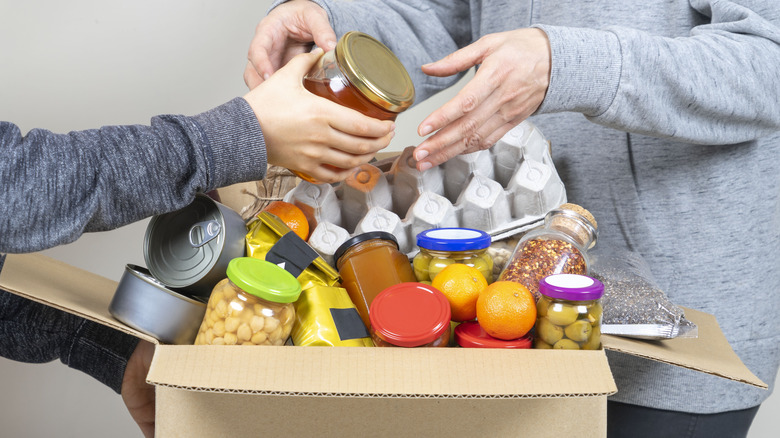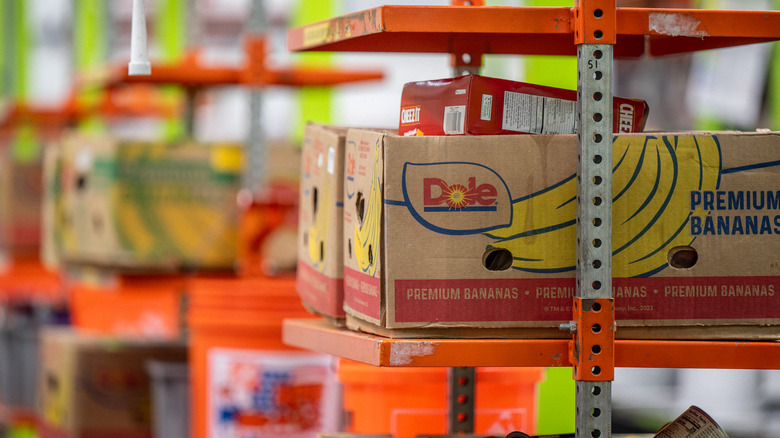Food Bank Assistance Is At Risk, But More People Than Ever Need It
When boosted SNAP benefits returned to their pre-pandemic level in March 2023, many people questioned the economic impact. Given the unstable inflation numbers, rising food costs, and other economic indicators, people's ability to put food on the table continues to be strained. And when the bank account cannot support the need, some people turn to food banks to provide those needed items. Unfortunately, those charitable shelves are looking a little bare.
Reuters reported that the combination of rising inflation and the end of temporary food assistance benefits is straining food banks across the nation. Specifically, it stated that "visits to their pantries are as high or higher than they were at the height of the pandemic," with a demand increase between 46 and 125%. While charitable organizations are trying to increase purchases to keep up with demand, the need outweighs the supply.
Rising food costs continue to strain food budgets, which has some people turning to food banks to fill the gap. Even though charitable organizations — like Share Our Strength — continue to commit funds to offset the end in SNAP benefits, the dollars can only stretch so far. The higher costs impact how much the charity can purchase, which impacts the amounts it can give out. As more people struggle to put food on the table, the demand grows, and food banks may be unable to satisfy that need. In some ways, the hunger crisis in the U.S. could be the perfect example of an ouroboros.
Why are food banks seeing a spike in demand?
When the COVID-19 pandemic impacted the world, the hunger crisis took a different turn, food banks were hit with overwhelming demand. And while the need was great during that timeframe, the demand has not fallen off. Tarrant Area Food Bank CEO Julie Butner told KERA news in Texas that the $5 million dollars in donations expected to fulfill 12 months of food donations only lasted for three months. Although Texas has a larger-than-normal food insecurity problem, the state's plight is not isolated.
As the U.S. Congress seeks to curb spending by increasing requirements to obtain SNAP benefits, food banks could see even more demand on their struggling supply. While people might be trying to stretch their food purchases, the rising food costs are a constant strain. Even though the private sector committed $8 billion to fight hunger, that money might not go as far as some people hope. Just like the consumer who has to reduce one purchase to offset the higher cost of eggs in the basket, charitable organizations have to take the fluctuating food costs into their budgets. Until the economy stabilizes, increased demand for food banks will continue to be part of the food conversation.

